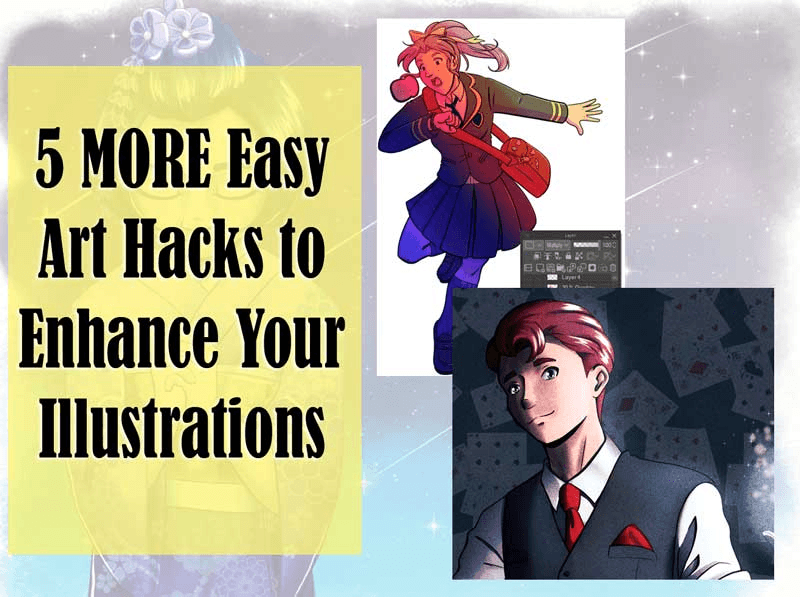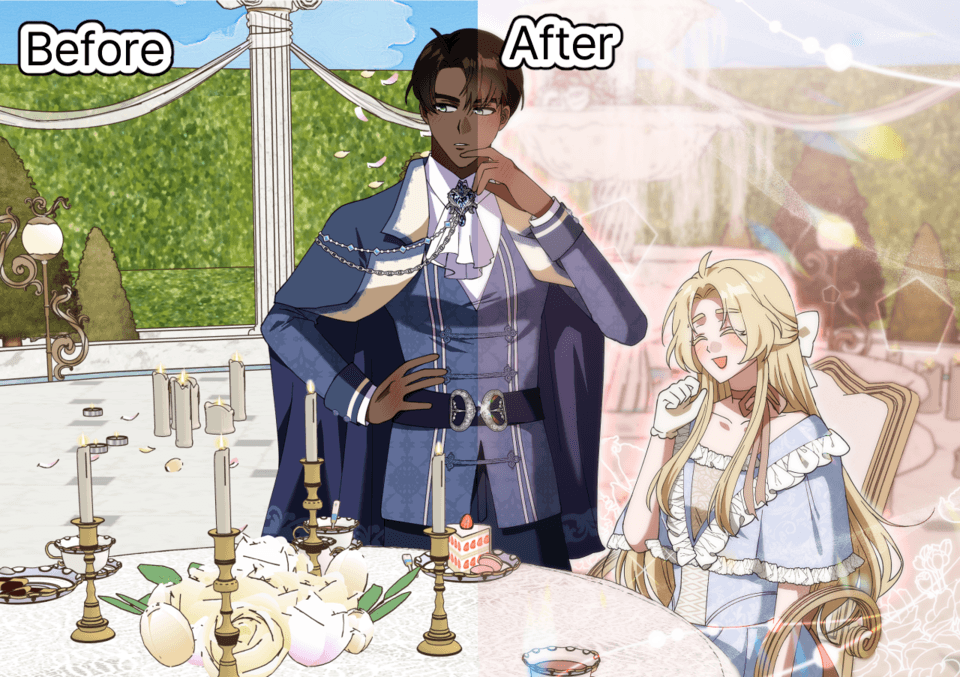learn to draw desserts! ୨♡୧ clip studio paint for beginners
learn to draw desserts!
Introduction
Hi! Here is a short little tutorial on how to draw desserts and sweets and incorporate them into your illustrations.
You can use candy as a cute little addition to your art!
There’s a bunch of amazing food art out there, so if you want to make something similar I’ve put them into 4 simple steps!
Step 1: Mapping it out
For this example I’m going to draw candy - some lollipops, hard candy in wrappers, a parfait, and then a cupcake!
Just like in gesture drawing for drawing characters - looking at photo references of the specific dessert food you wanna draw is going to help a lot!
Through the references, drawing out its general shape will help you understand how the object works. Practicing the general outline will get you used to drawing it.
Personally I use Pinterest for reference images, but you can get them from anywhere!
Be sure to get some variation in the reference images that you choose, like a slice of cake from two different angles that you would most probably want to draw it at. It’s not going to be very helpful to practice drawing something at an impossible angle that you aren’t going to draw it at anyway, so keep it basic!
**\
I’d suggest doing some simple 1 minute sketches, without much detail, of the outline of the object! It’s just to map it out and get a feel of the general body of the object.**
The brush I use for sketching can be found in the Clip Studio Assets store! It’s got a bunch of different brushes you can use for different styles, but my favorite is the PACHE Brush, by Nugong, Content ID: 1741368.
Step 2: Shapes
So now that we’ve got our basic sketches of the outlines done, we just have to know how to build it up to make the final result! Break it down into basic shapes - rectangles, triangles, etc. Try to use 3D shapes for a more 3D final look.
For example: a cupcake can be broken down into a short cylinder for the cupcake part, and a cone for the icing! There’s many different looks to every dessert so looking at more references can help you to decide what you like best. It can be as simple and plain as you want, or you can go for something super complex with lots of toppings and crazy icing! Either way, all you have to do is break it down into basic shapes!
From bigger shapes, like the cone and cylinder, it can be broken down further into smaller shapes that make up the bigger shape! Those shapes will fit together to form the structure.
Some tools that can help you out on CSP are
1] Sub Tool Figure: It can help you draw the basic shapes easier and cleaner without needing to sketch it yourself. You can use this tool to outline the broken down shapes, and then use those as guidelines!
2] Material 3D: Under ‘Primative’ you can find some basic shapes which can help you understand 3D shapes and the way they distort with movement. There’s also a bunch of settings that you can play with to create the perfect shape you need.
3] CSP Assets: You can find full 3D renders of the specific object you want to study, like for example cakes. And those work as great references and save a lot of time!
Step 3: Details
And well, the last 2 steps basically teach you how to learn the anatomy of the cupcake or parfait or whatever you want to draw. All that’s left now is to put it into practice!
Sketch in the details of the dessert now! Take your guideline sketch of the shapes, and add in the smaller details to make it look smoother.
To make a more cartoony effect you can play with sizes, proportions, roundness, etc. This all depends on your art style and the kind of look you’d like to achieve! The more details you add, the more realistic it’s going to look.
For beginners:
While drawing your final sketch make sure to keep it on a new and separate layer, which you can create by clicking on New Raster Layer. This will allow you to change the opacity of the first sketch layer to make it easier to draw your final sketch.
A good tip is to not stick too hard to the guidelines of the initial shapes you’ve drawn, to give your drawing better flow. It’s easier to do that when the guidelines are at a lower opacity!
Step 4: Lineart and rendering
The final step is of course, lineart and rendering! This depends heavily on your art style and preference. The more you render, the more realistic and 3D it’ll look!
Another good tip, is when drawing your lineart, lower your sketch layers opacity all the way to around 10%, where it’s just barely visible so you’re able to see exactly what your lineart is going to look like without the sketch. That’ll prevent your lineart from looking too different from your sketch!
Always remember to check that you’re on a separate layer before you start your lineart (create a new one on top of the sketch layer with New Raster Layer) and you can also set your sketch layer as a Draft Layer which will mark it with a blue bar.
This will make it much easier to fill in your lineart when coloring! The draft layer makes it so the sketch layer will not be taken into consideration while filling in color.
You can also keep different parts of the illustration in separate folders (like the
toppings of the cupcake or parfait). This can help with making adjustments to sizes, and to easily duplicate objects, etc.
In Tonal Correction there’s the Hue/Saturation/Luminosity option which brings up this slider, which you can use to adjust the colors. It helps to easily change the colors of some things that are already colored or needs a slight alteration. It’s especially helpful with the candies to make different colored candy and bring in some variation!
Conclusion
Now that we can draw all these sweet treats, we can put them into our illustrations!
Make sure to add some shadows for depth so the desserts don’t look out of place in the image and to integrate them into it properly!
Hope this tutorial helped! ♡























Comment